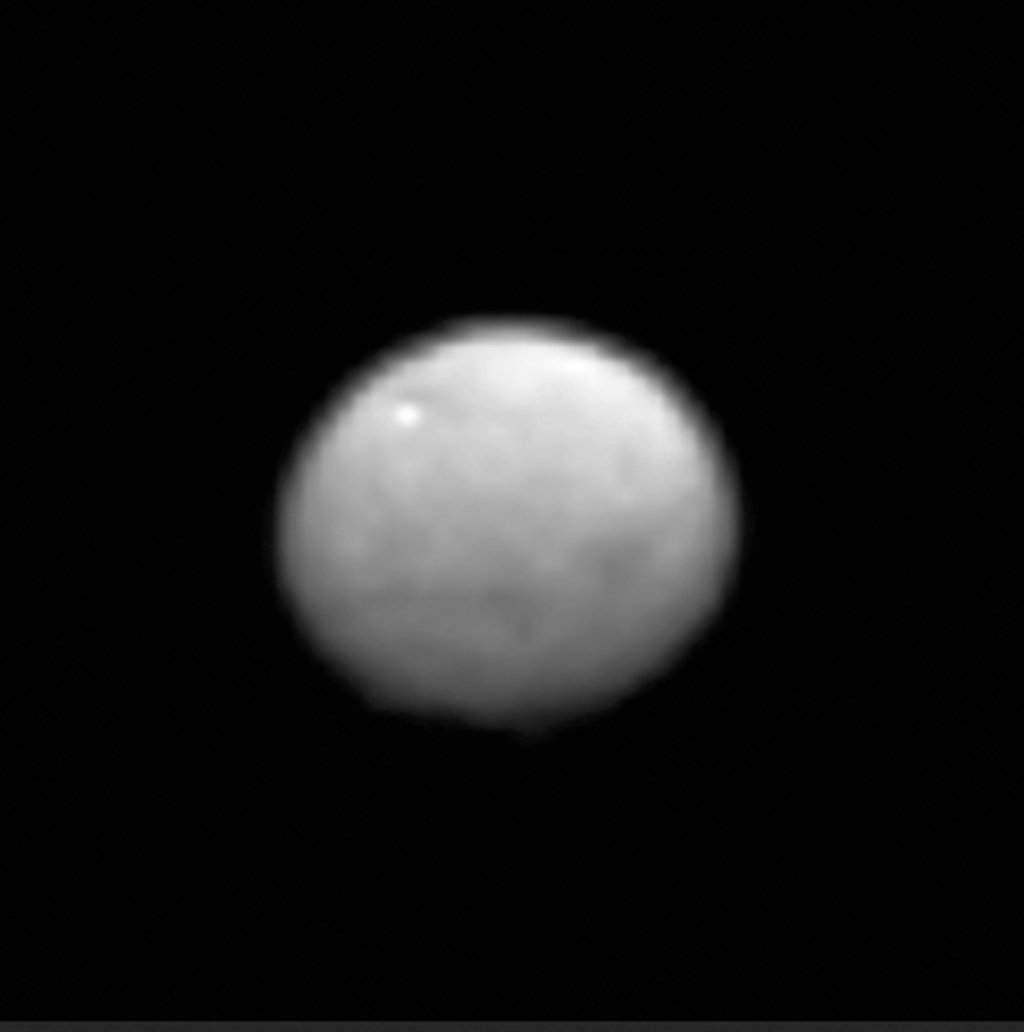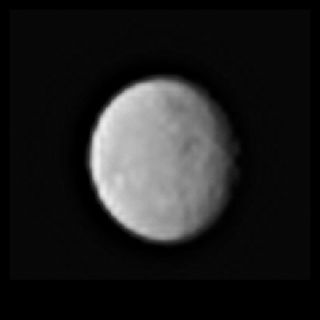NASA Probe Snaps Amazing New Views of Dwarf Planet Ceres (Photos, Video)

A spacecraft closing in on the dwarf planet Ceres in the solar system's asteroid belt has captured tantalizing new views of the huge space rock, revealing hints of craters and other structures on the surface of this mysterious body.
NASA's Dawn spacecraft snapped the new images of Ceres, which is the largest object in the asteroid belt between the orbits of Mars and Jupiter, on Jan. 13. Scientists unveiled the images on Monday (Jan. 19).
Dawn is rapidly approaching Ceres and is due to arrive in orbit around the dwarf planet on March 6. The images are still blurry, and are primarily for navigation purposes for Dawn, but they show hints of craters on Ceres' surface, including a mysterious white spot near the upper left, which may be light reflecting off of a crater. The photos are an early taste of the much more detailed view of Ceres that Dawn will bring in 2015. [Photos: Dwarf Planet Ceres Revealed]
"The [Dawn] team is very excited to examine the surface of Ceres in never-before-seen detail," Chris Russell, principal investigator for the Dawn mission, said in a statement from NASA's Jet Propulsion Laboratory in Pasadena, California. "We look forward to the surprises this mysterious world may bring."

The dwarf planet Ceres is about the size of Texas, with an average width of 590 miles (950 kilometers). It is the largest object in the asteroid belt but the smallest known dwarf planet in the solar system.
The Dawn spacecraft will be the first spacecraft to study Ceres — or any dwarf planet — up close. By the end of January, Dawn will obtain higher-resolution images of Ceres than the Hubble Space Telescope, NASA said in the statement. The new images from Dawn were taken at a distance of 238,000 miles (383,000 km) and are three times sharper than a batch taken in December, which were used primarily to calibrate the spacecraft's instruments.

Ceres was discovered in 1801 by Sicilian astronomer Giuseppe Piazzi and was initially considered a planet. But when scientists later discovered that Ceres was just one of many objects in the asteroid belt, it was reclassified as an asteroid. In 2006, Ceres' classification changed once again — this time, to dwarf planet (in order to gain full planet status, Ceres would need to gravitationally clear its neighborhood of debris). Today, Ceres enjoys joint classification as both an asteroid and a dwarf planet.
Get the Space.com Newsletter
Breaking space news, the latest updates on rocket launches, skywatching events and more!
Earlier this year, scientists announced the discovery of water on Ceres, in the form of vapor plumes that erupt into the sky. The plumes may come from volcano-like ice geysers. The vapor gives Ceres a bit of an atmosphere, and scientists wonder if there may also be liquid oceans beneath the surface.
Follow Calla Cofield @callacofield.Follow us @Spacedotcom, Facebook and Google+. Original article on Space.com.
Join our Space Forums to keep talking space on the latest missions, night sky and more! And if you have a news tip, correction or comment, let us know at: community@space.com.

Calla Cofield joined Space.com's crew in October 2014. She enjoys writing about black holes, exploding stars, ripples in space-time, science in comic books, and all the mysteries of the cosmos. Prior to joining Space.com Calla worked as a freelance writer, with her work appearing in APS News, Symmetry magazine, Scientific American, Nature News, Physics World, and others. From 2010 to 2014 she was a producer for The Physics Central Podcast. Previously, Calla worked at the American Museum of Natural History in New York City (hands down the best office building ever) and SLAC National Accelerator Laboratory in California. Calla studied physics at the University of Massachusetts, Amherst and is originally from Sandy, Utah. In 2018, Calla left Space.com to join NASA's Jet Propulsion Laboratory media team where she oversees astronomy, physics, exoplanets and the Cold Atom Lab mission. She has been underground at three of the largest particle accelerators in the world and would really like to know what the heck dark matter is. Contact Calla via: E-Mail – Twitter